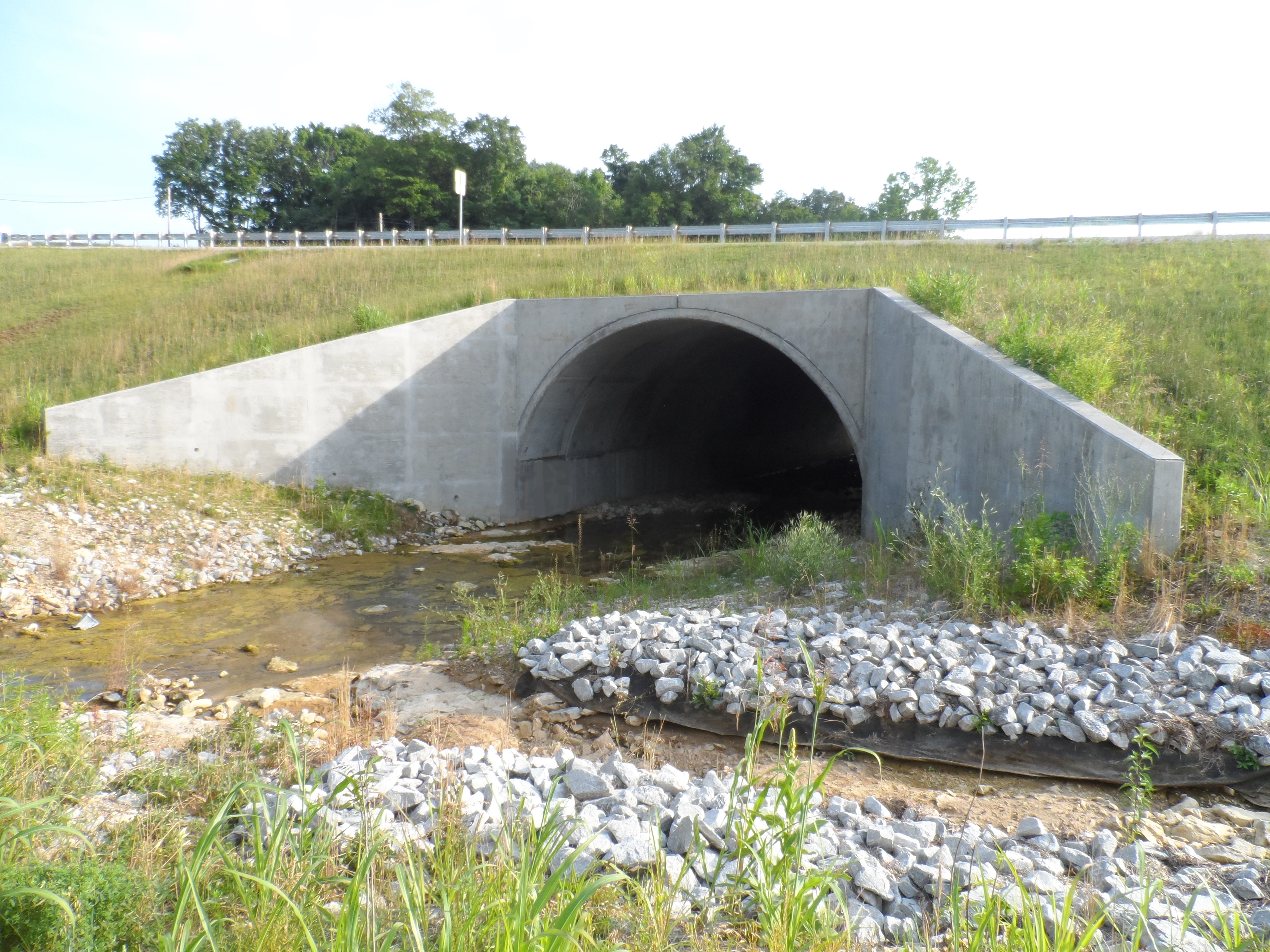SR 60 Arch Extension
As part of a new bypass highway around the city of Salem, Indiana, it was necessary for the Indiana Department of Transportation (INDOT) to widen the existing State Route 60 just east of town near the new intersection. An existing cast-in-place arch bridge built in 1948 carried the road over Hoggatt Branch, a small stream. The 30’ span x 17’ rise circular arch supported around 13’ of earth fill in addition to the roadway traffic. INDOT found that in spite of its age, 60-plus year old structure had plenty of life left and was sized well for the stream. Removal and replacement would have meant several months of a long detour on a heavily traveled road or a temporary crossing which would have added expense and additional environmental impact to the stream.
INDOT is no stranger to arch structures. Over the past 20 years, the department has made extensive use of precast concrete arches at stream crossings. In this case, INDOT decided to leave the existing arch in place and extend both ends using precast concrete arch sections. A 30’ span x 17’ clear rise circular arch was specified to nearly match the shape of the existing structure. A cast-in-place closure pour would provide a smooth transition from new precast to old arch. Pretek, in partnership with Independent Concrete Pipe of Louisville, Kentucky, proposed two options at bid time. The first was a 30’ span x 12’ rise single-radius ECO-SPAN arch on 5’ tall cast-in-place stem walls. The second was a 30’ span x 17’ rise single-radius ECO-SPAN arch.
The successful contractor, Gohmann Construction Inc., chose the single-piece arch on stem walls. While Gohmann prepared the site, Independent Concrete Pipe poured the nine arch segments. In March, 2012, the precast arch units were installed. Flaggers stopped traffic temporarily while the precast arch segments were removed from the trucks and rotated upright for 5-10 minutes each. Otherwise, traffic continued without interruption throughout the project. INDOT’s decision to leave the existing structure in place also provided environmental benefits. There was no need to install a temporary bridge or pipe. Construction equipment crossing the stream could cross over the existing arch instead of through the stream.
This is a case where the use of a buried prefabricated arch system allowed for an accelerated construction schedule, minimal traffic interruption, minimal environmental impact, and a very long-lasting structure that will require minimal maintenance over its life. In addition, initial cost was minimized by leaving the existing structure in service.
For more information on this project, see Pretek’s presentation at the 2013 Transportation Research Board Workshop, “Advancing the use of culverts for highway bridges“.

